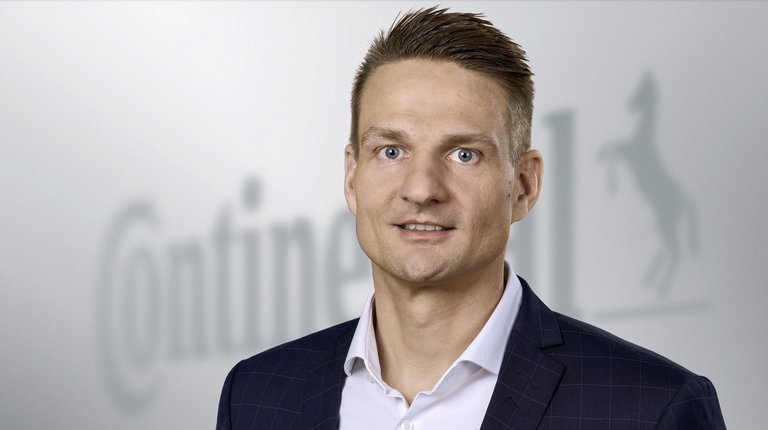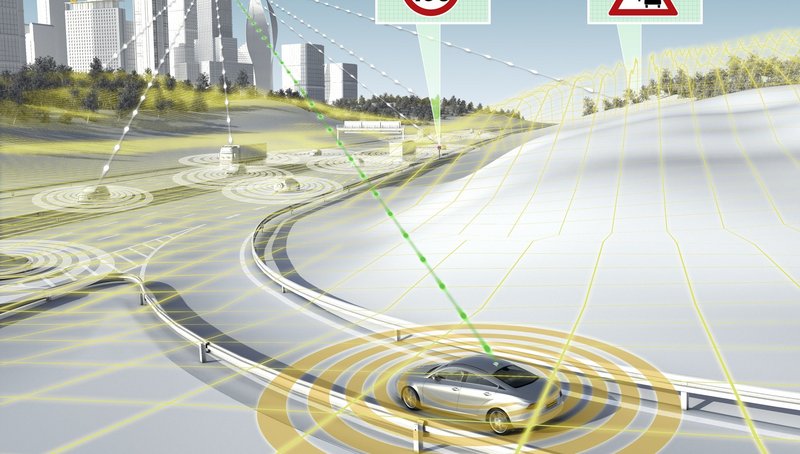Continental, Deutsche Telekom, Fraunhofer ESK, and Nokia Networks Showcase First Safety Applications at "digital A9 motorway test bed"
- First project at the “digital A9 motorway test bed” aims to improve road safety and traffic control
- Upgrades the mobile network using real-time technology
Munich, Germany, November 9, 2015
Continental, Deutsche Telekom AG, Fraunhofer ESK, and Nokia Networks today demonstrated real-time communication between vehicles via the LTE cell network, in the presence of Federal Minister of Transport Alexander Dobrindt. This was a demonstration of the first project arising from the "Innovation Charter for the digital A9 motorway test bed"
The exercise demonstrates how vehicles on the motorway can share hazard information using the LTE network of Deutsche Telekom. As extremely short transmission times are vital for this purpose, a section of the Deutsche Telekom network was equipped with innovative Mobile Edge Computing technology from Nokia Networks, and upgraded with position-locating technology developed by Fraunhofer ESK. This combination will, for the first time, permit signal transport times between two vehicles of less than 20 milliseconds. Combining the technology with the vehicle electronics interface developed by Continental gives rise to a number of different applications aimed at making driving safer and more comfortable.
Alexander Dobrindt, the German Federal Minister of Transport and Digital Infrastructure, commented:
"With the “digital A9 motorway test bed’, we have created a technology-neutral offering for industry and research. Innovative companies can trial automated and networked driving in real-life conditions on the motorway. We are, in a very real sense, bringing the laboratory to the road. This is the first demonstration of car-to-car communication via a high-speed cellular connection with near-5G performance. With it, we are taking the leap into the digital real-time age on the road. This will make traffic more predictable for drivers and will help prevent traffic jams and accidents. The project highlights the fact that Germany is paving the way for Mobility 4.0 in the digitalized world. Our ambition is to make the rating “tested on German Autobahn” internationally recognized as a standard."
Tim Höttges, CEO, Deutsche Telekom, added: "Digital mobility requires a fast nationwide telecommunications network. We aspire to be the leading European telecommunications provider and that is why we are at the forefront when it comes to developing new standards. We are taking part in the “digital A9 motorway test bed” because we want to make driving safer and help to significantly reduce the number of traffic fatalities."
Ralf Lenninger, Head of Strategy and Innovation in Continental’s Interior Division, said:
"At Continental, we understand clearly that the Internet helps to improve the vehicle. The principle behind it is simple: the more a vehicle knows about the surroundings and the behavior of other road users, the lower its energy consumption and the fewer the traffic fatalities. Real-time communication with other vehicles and with the road and communications infrastructure allows vehicles to respond to situations that neither the driver's eyes nor the vehicle's sensors can identify."
Kathrin Buvac, Chief Strategy Officer, Nokia Networks, added: "We are driving forward the development of fifth-generation mobile communications technology so that our customers – including Deutsche Telekom – are equipped for future use cases in the light of Industry 4.0 and the Internet of Things. Digitalization of the automotive sector plays an important role – especially in Germany. Communication in this field must function practically in real-time. With Mobile Edge Computing, which was developed chiefly by Nokia, we are already integrating elements of 5G into modern LTE networks and are supporting a number of new applications. In this way, we are playing our part in making driving safer for the future."
Professor Dr.-Ing. Rudi Knorr, director of the Fraunhofer ESK institute, also contributed this comment: "Reliable networking will increase safety considerably for all road users. With our application-focused research, we are assisting industry in the rapid development of reliable vehicle networking. In particular in cooperative driver assistance systems – in which the vehicles involved broker driving suggestions – robust, real-time constant communication is vital."
Information about the technology
The project involved upgrading Deutsche Telekom’s existing LTE network of at sections of the A9 motorway test bed with Mobile Edge Computing technology from Nokia Networks. The LTE base stations were upgraded with plug-in modules (known as “cloudlets”). These cloudlets ensure that information is directly routed within the cells, instead of transporting data through the mobile network via the cloud. This means that end-to-end latency can be cut dramatically, to 20 milliseconds and below. Without the new technology, transmission of signals between two vehicles via LTE networks and the central cloud can take a hundred milliseconds in the best-case scenario, and as much as several hundred milliseconds in unfavorable conditions. Road safety applications via mobile networks are only possible thanks to this fast data transmission.
The test vehicles contain an on-board unit, which is connected to the vehicle systems and communicates with the LTE network via a wireless module. Continental supplies the interface to the cars’ on-board systems via the CAN bus and the tablet application software. Fraunhofer ESK developed the GeoService software, which ensures that the vehicles' position data is recorded and processed directly at the LTE base station. The geo service at the mobile base stations allows that incident warnings can be sent practically in real-time to all vehicles in the relevant area.

Sebastian Fillenberg
Head of External Communications
Continental Automotive
